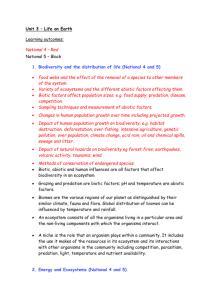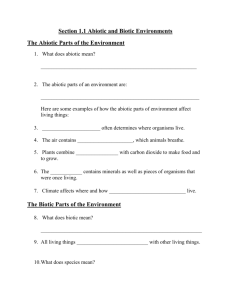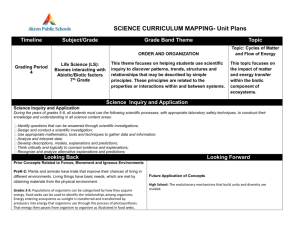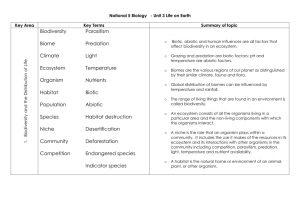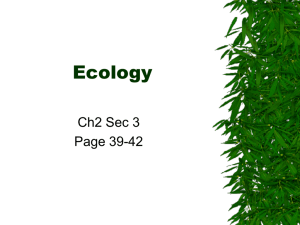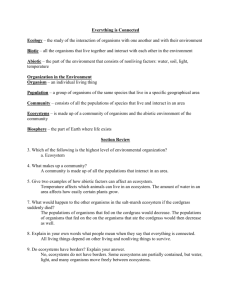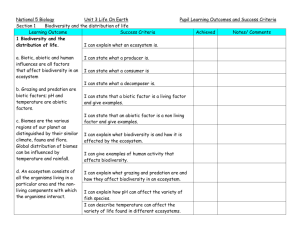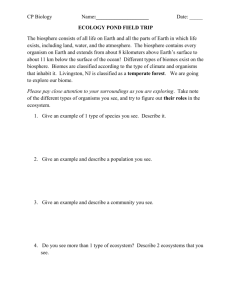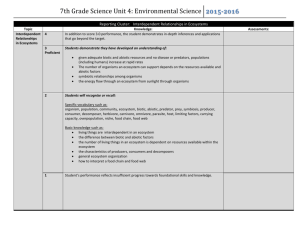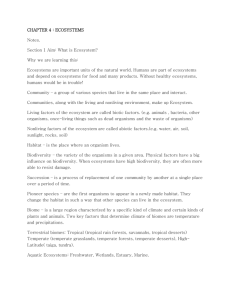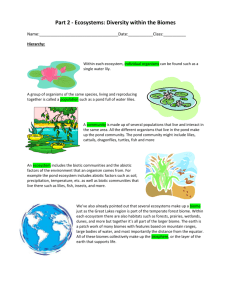Unit 3 Learning Outcomes
advertisement
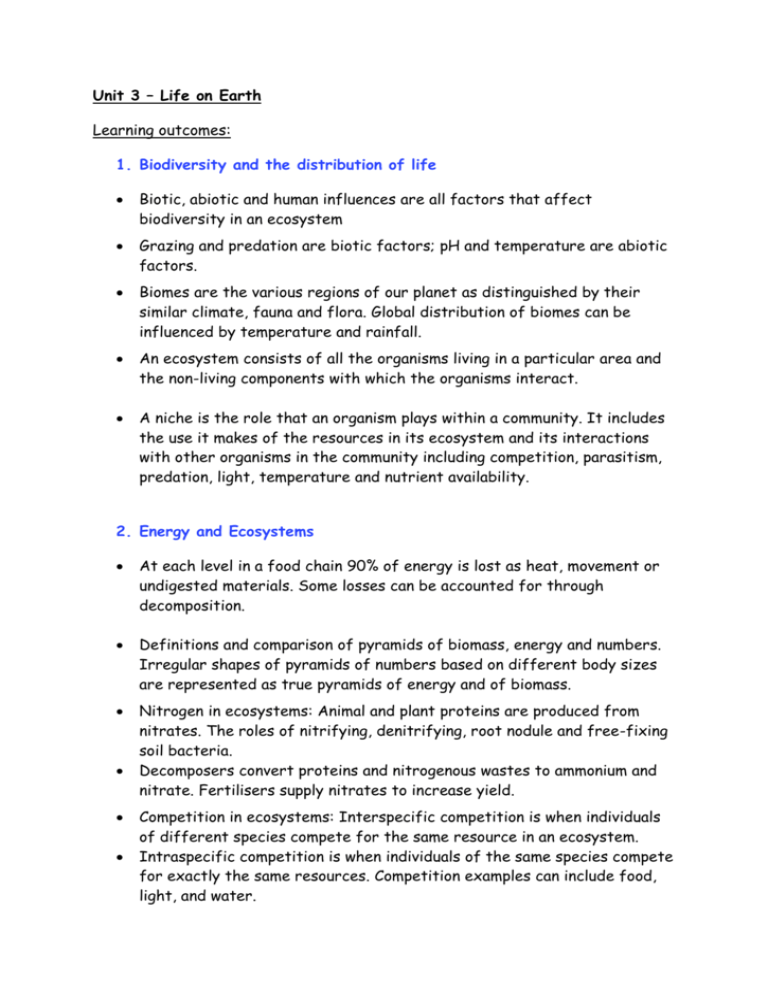
Unit 3 – Life on Earth Learning outcomes: 1. Biodiversity and the distribution of life Biotic, abiotic and human influences are all factors that affect biodiversity in an ecosystem Grazing and predation are biotic factors; pH and temperature are abiotic factors. Biomes are the various regions of our planet as distinguished by their similar climate, fauna and flora. Global distribution of biomes can be influenced by temperature and rainfall. An ecosystem consists of all the organisms living in a particular area and the non-living components with which the organisms interact. A niche is the role that an organism plays within a community. It includes the use it makes of the resources in its ecosystem and its interactions with other organisms in the community including competition, parasitism, predation, light, temperature and nutrient availability. 2. Energy and Ecosystems At each level in a food chain 90% of energy is lost as heat, movement or undigested materials. Some losses can be accounted for through decomposition. Definitions and comparison of pyramids of biomass, energy and numbers. Irregular shapes of pyramids of numbers based on different body sizes are represented as true pyramids of energy and of biomass. Nitrogen in ecosystems: Animal and plant proteins are produced from nitrates. The roles of nitrifying, denitrifying, root nodule and free-fixing soil bacteria. Decomposers convert proteins and nitrogenous wastes to ammonium and nitrate. Fertilisers supply nitrates to increase yield. Competition in ecosystems: Interspecific competition is when individuals of different species compete for the same resource in an ecosystem. Intraspecific competition is when individuals of the same species compete for exactly the same resources. Competition examples can include food, light, and water. 3. Sampling techniques Pupils will have the opportunity to develop the following knowledge and understanding: Sampling plants and animals using quantitative techniques including quadrats and pitfall traps. Evaluation of limitations and sources of error in pitfall traps and quadrats. Measuring abiotic factors including light intensity, temperature, pH and soil moisture. 4. Adaptations and evolution of new species State that a mutation is a random change to genetic material. State that mutations are spontaneous, they are the only source of new alleles and may be neutral, confer an advantage or disadvantage. State that environmental factors such as radiation and chemicals can increase the rate of mutation. State that an adaptation is an inherited characteristic that makes an organism well suited to survival in its environment/niche. Explain that variation within a population makes it possible for a population to evolve over time in response to changing environmental conditions. Describe natural selection/survival of the fittest as a process whereby more offspring are produced than the environment can sustain, only the best adapted individuals survive to reproduce, passing on the genes that confer the selective advantage. Describe speciation as a process whereby a population becomes isolated and natural selection follows a different path due to different conditions/selection pressures. 5. Human impact on the environment (National 5) State that the increasing human population requires an increased food yield. Describe the process whereby fertilisers leach into fresh water, causing algal blooms and a reduction in oxygen levels. Explain that pesticides sprayed onto crops can accumulate in the bodies of organisms over time and as they are passed along food chains, toxicity increases and can reach fatal levels. State that indicator species are species that by their presence or absence indicate environmental quality/levels of pollution. State that biological control and GM crops may be alternatives to mitigate the effects of intensive farming on the environment.
